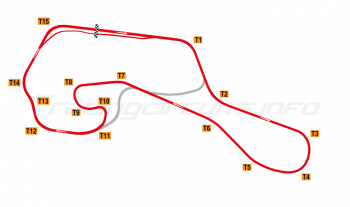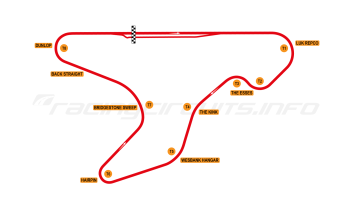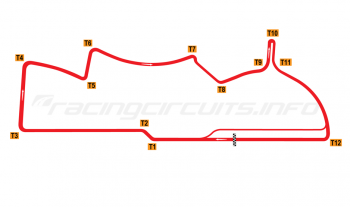Salvador
Circuit Overview
A race around the streets of the government area of capital of the Bahia state, Salvador's circuit has in recent years been named in honour of Ayrton Senna (a confusingly common occurrence among Brazilian circuits!).
Home to the Grand Prix Bahia, the event was among the best attended on the Stock Car calendar, with more than 60,000 attending the first running of the race in 2010.
Despite this, the race had a relatively short shelf-life, with only six runnings before being canned by the series organisers.
Circuit History
Salvador was the first capital of colonial Brazil and its architecture and culture reflect its European and African heritage. A vibrant arts movement sees many festivals take place here, giving rise to the city's unofficial naming as Brazil's 'capital of happiness'. The largest city on the north-eastern coast and the third largest in Brazil, Salvador was a natural place for race organisers to target.
In 2009, the organisers of Brazil's wildly popular Stock Car series duly obliged, signing a contract with the city to host its first ever street race. Based around the curving roads of the 1970s administrative district (CAB), the circuit features as a backdrop Bahia's Legislative Assembly, Courts of Justice and Department of Tourism, not to mention the highly futuristic exhibition centre which appears to be balanced in mid-air like an incomplete suspension bridge.
The first race took place on August 9, 2009, with Red Bull driver Caca Bueno becoming the first winner of a street race in Stock Car. According to estimates of the Military Police, more than 60 thousand people attended the race, with around 35,000 in the main grandstands. Overall the drivers were reasonably positive about the track layout but found overtaking challenging, so suggested a number of modifications to improve racing and safety.
For the second running in 2010, two chicanes were added – one immediately after the start/finish and another on the return loop. Rains greeted the drivers on race morning, leaving Caca Bueno to splash his way to a second successive victory. Crowds were again enormous, with up to 42,000 seated in the expanded grandstands. Successive years followed the trend and the race became the best-attended on the schedule.
The track was renamed 'Circuito Ayrton Senna' in 2010 and a monument to the great Brazilian, created by Bahian artist Bel Borba, was erected inside the course. In 2012, a new contract was signed by the Government, extending the race until at least 2018. Studies have show that the event has proved a boon to the local tourism industry, boosting hotel occupancy by around 15 per cent in what would otherwise be considered the low season.
Despite the contract, the 2014 event proved to be the last, with the Stock Car series electing to move elsewhere as street circuits began to all out of favour.
Jump onboard
Circuit info
This is a historic circuit which is no longer in operation.
Rate This Circuit
Votes: 4116
Location Information
The Circuito Ayrton Senna was located in the administrative district (Centro Administrativo da Bahia or CAB) in Salvador in Bahia state, Brazil. The nearest airport is Deputado Luís Eduardo Magalhães International Airport, around 15 minutes drive to the north-east, which offers some international flights and connections to all of Brazil's other major airports.
The circuit was based off the main Avenue Luis Viana, around a 20 minute drive from the centre of Salvador.
Get your race tickets!
Brought to you with: 
We've teamed up with Motorsports Tickets to bring you the best deals for Formula One, MotoGP, Le Mans and more.









